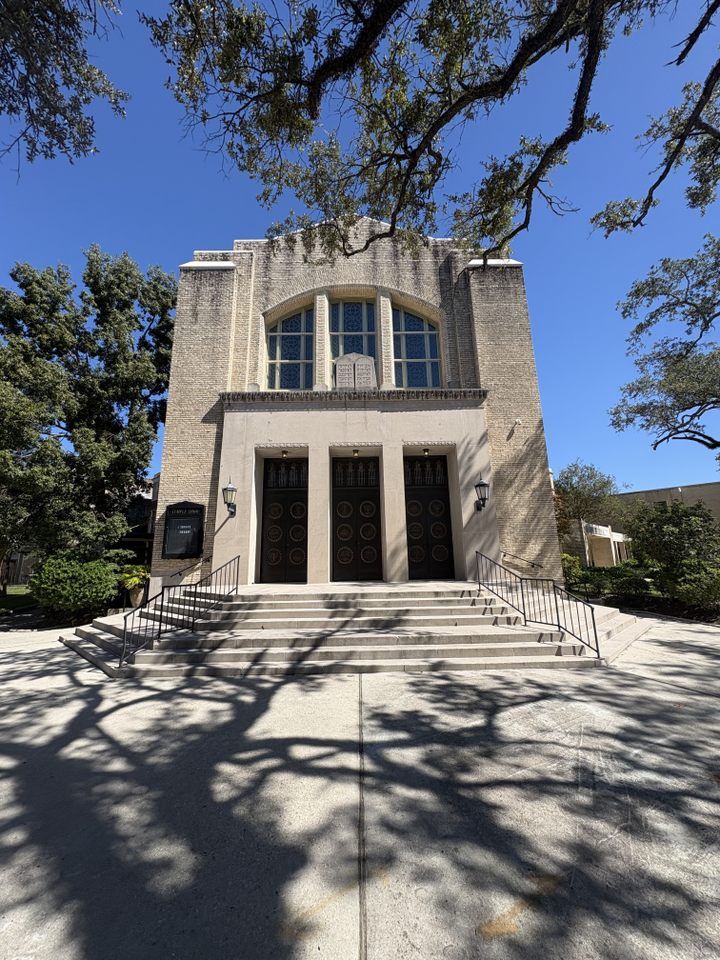Coming from a Southern high school of mostly non-Jews, it was hard not to feel a tinge of joy this High Holiday season as I watched the pilgrimage of Tulane University Jews making its way from the dorms, to the Malkin Sacks Commons and on to Tulane Hillel and Chabad for Yom Kippur services.
Tulane does an excellent job facilitating a strong environment for Jewish students, with Chabad and Hillel as driving factors. While I love and engage with these two organizations, this Yom Kippur, I experienced a Jewish college experience beyond the Tulane bubble. I encourage my fellow members of the tribe to consider this option next year.
For Kol Nidre, a service the night before Yom Kippur, I went to Hillel. I was unimpressed. I hate to say that, as it wasn’t their fault; the $18 dinner fee may have driven poor turnout. Upstairs was standing room only for the first Shabbat of the semester, but for this Yom Kippur, it was filled with about 25 students and Hillel employees.
The service was short and functional, but it didn’t scratch the itch I sought during the holiest holiday of the year. Additionally, the worn prayer books provided little transliteration — phonetic spelling of Hebrew words — meaning that the rabbi was forced to awkwardly pray aloud by herself at times.
Before I completely wrote off on-campus service options, I wanted to try Chabad’s Yom Kippur offerings. So, the next morning, almost 16 hours into my fast, I attended Chabad’s Shacharit, the Yom Kippur Morning service. Coming from an extremely Reform synagogue back home, where my middle-aged lesbian rabbi leads services off her iPad Pro, the Chabad service provided a starkly different religious experience.
It was separated by gender and filled with Tulane students seeking a more traditional service. This intricate ceremony consisted of practicing Chabad members draped in tefillin and traditional wear up front swaying and praying, leaving anyone unfamiliar with these customs confused. The service was all Hebrew, and nonstop at that. I ended up leaving under 30 minutes into the morning service.
I don’t think Chabad needs to make services more accommodating for the students. The Lubavitchers are experiencing Yom Kippur too and they should lead the services how they see fit.
Leaving Chabad, I missed my Reform synagogue back home and the eclectic cast of characters I would interact with in every service. Although I love the picture-perfect Jewish community that Tulane presents, the services I attended didn’t stick the landing for me. Out of desperation, I walked through A quad, past Loyola’s campus and found myself outside New Orleans Temple Sinai.
Founded in 1870 and with over 450 current families, Temple Sinai is New Orleans’ oldest and one of the largest Reform synagogues. Walking in, one sees a beautiful Neo-Byzantine-style interior fit with grandiose domes, columns extenuating the large Torah ark and tall stained-glass windows.
I was met with enthusiasm by the front door staff and security, finding my seat in the back. Although nearly 40 minutes late, I found the service to be what I was looking for within Hillel and Chabad. Rabbi Daniel M. Sherman expertly led the congregation through the morning service, providing a well-balanced mix of Hebrew and English throughout the sermon and occasional commentary giving onlookers insight into what they were reading. The end of his speech was beautifully written and provided alluring themes not only for the holy day but for the rest of the year.
At one point, the rabbi even shed a tear during an especially poignant piece of his speech. Rabbi Sherman, a Yale alumnus, previously served as a rabbi for three different congregations in South Carolina and Florida before landing in New Orleans. He led the service with extreme confidence and delivered keen insights throughout the service. I appreciated my first time at Temple Sinai and left with a brighter outlook on the day.
I came back later that day for the Neilah, or closing, service. This sermon was equally well done and moving, perfectly wrapping up the holy day. My favorite part of the service was when the cantor and the rabbi picked up their guitars and sang the blessing for wine, spices and candles in a style one would listen to at any Jewish summer camp. I’m guessing bringing a guitar to a Chabad service would be met with the same reaction as bringing a package of bacon.
At the conclusion of the service, my friends and I were led to the back for a communal breakfast with a spread that would please any Jewish grandmother. With enough cheese blintzes and tuna salad sandwiches to feed the hungriest of bar mitzvah boys, I was more than happy to break my 24-hour fast with food other than the Commons. I was surrounded with a community of Jews that were welcoming of us Tulane students and who encouraged us to continue coming to Temple Sinai.
Leaving the Tulane bubble that day took some time, but I felt relief coming to Temple Sinai for Yom Kippur. It’s hard not to miss your home synagogue, but I found shelter within Rabbi Sherman’s congregation. Sinai isn’t the only option for those looking for an alternative space for prayer on the High Holidays. Some students trek to the Shir Chadash Congregation in Metairie for a more Conservative Yom Kippur experience.
Next year, on Yom Kippur, don’t feel obligated to stay within the bounds of Broadway Street and Freret Street. Take that leap of faith and explore a new synagogue, experience a reform or conservative experience outside your home temple. One can meet a whole new cast of Jews from New Orleans who love to talk to college students, especially when you’re eager to talk back to them. I still love Hillel and Chabad, and I greatly appreciate what they do for Tulane, but next Yom Kippur, you can find me at Temple Sinai.



